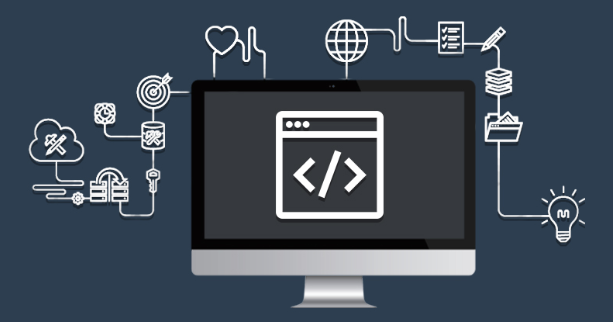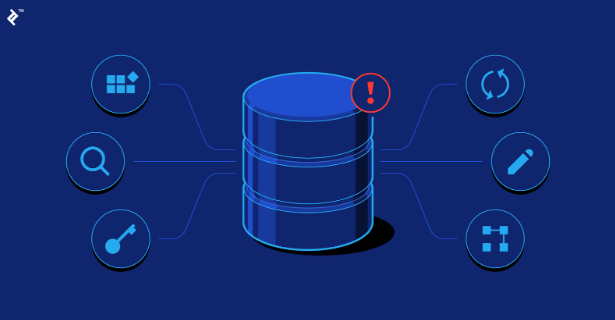Languages for Building Websites: The Tools Behind the Internet
Building a website is an exciting journey that blends creativity and technology. Behind every interactive webpage or sleek design lies a collection of programming languages working together. Each language plays a specific role, much like ingredients in a recipe. Let’s explore the most commonly used languages and understand their purpose in web development.
Front-End Development
 Source: namasteui.com
Source: namasteui.com
The front-end of a website refers to everything that users interact with directly, including visual elements like buttons, graphics, and text. It involves the graphical user interface (GUI), which allows users to navigate and interact with a website. In technical terms, this is the Document Object Model (DOM), representing the web page’s structure and content. Three main languages are used in front-end development: HTML, CSS, and JavaScript.
- HTML (Hypertext Markup Language)
HTML is the foundation of any webpage. It defines the structure of the website and its content, such as headings, paragraphs, and links. HTML is not a programming language but a markup language that uses tags to organize content.
- CSS (Cascading Style Sheets)
CSS is used to control the layout, design, and visual appearance of a website. It enables web designers to apply styles such as colors, fonts, and spacing. CSS works alongside HTML to create an aesthetically pleasing and responsive layout.
- JavaScript
JavaScript is a programming language that adds interactivity and dynamic features to web pages. From interactive maps to live updates, JavaScript allows websites to respond to user actions without reloading the page. It works alongside HTML and CSS, enhancing the functionality of a website.
- Front-End Frameworks and Libraries
- React.js: An open-source JavaScript library developed by Facebook, React simplifies the creation of interactive user interfaces with reusable components.
- Angular: Developed and maintained by Google, Angular is a powerful framework for building large-scale, high-performance web applications. It supports dynamic content, routing, and dependency injection.Vue.js: A lightweight JavaScript framework for building user interfaces, Vue.js enhances HTML, CSS, and JavaScript with a component-based model and reactivity, allowing automatic updates to the DOM when the state changes.
Back-End Development
 Source: ginkgoukraine.com
Source: ginkgoukraine.com
The back-end is the server side of a website, handling data processing, storing information, and managing user requests. It interacts with databases and APIs, and it is responsible for ensuring that the front-end receives the necessary data and instructions.
- PHP (Hypertext Preprocessor)
PHP is a widely used, open-source server-side scripting language. It is particularly popular for building dynamic websites, such as blogs and content management systems (e.g., WordPress). PHP is compatible with many operating systems and web servers, making it versatile and beginner-friendly.
- Python
Python is a high-level, object-oriented language known for its simplicity and readability. It’s widely used for web development, particularly with frameworks like Django and Flask. Python’s ease of use and vast library support make it a favorite among developers.
- ASP.NET
ASP.NET is an open-source framework by Microsoft for building web applications and services. It extends the .NET platform with tools like Razor syntax for dynamic web pages and MVC libraries for creating scalable and maintainable applications.
- Node.js
Node.js is a runtime environment that allows developers to run JavaScript on the server side. It is known for its event-driven, non-blocking architecture, which makes it ideal for building high-performance, real-time applications.
Databases
 Source: Binar Academy
Source: Binar Academy
A database stores and organizes data for websites. Databases handle everything from user accounts to transaction records, ensuring that data is easily accessible, secure, and consistent.
- SQL Databases
- MySQL: An open-source relational database management system that stores data in tables. It’s widely used for its reliability and support for complex queries.
- PostgreSQL: A powerful, open-source object-relational database system known for its advanced features and data integrity. It supports complex queries and large datasets.
- NoSQL Databases
- MongoDB: A popular NoSQL database that stores data in flexible, JSON-like documents rather than tables. MongoDB is ideal for applications that handle large volumes of unstructured or semi-structured data.
- Firebase: A cloud-based platform by Google that provides real-time NoSQL database services, along with analytics, authentication, and push notifications. Firebase simplifies development by handling backend services for mobile and web apps.
From the user-friendly front end to the powerful back end and reliable databases, each layer plays a critical role in web development. Whether you’re building a simple blog or a complex web application, understanding these technologies will help you create efficient, scalable, and engaging websites. By choosing the right tools for your project, you’ll be able to craft websites that come to life, delivering smooth user experiences and robust functionality.
References:
Imoh, William. (2024). What Front End Programming Languages Should You Learn? roadmap. https://roadmap.sh/frontend/languages
n.d. n.d. What’s the Difference Between Frontend and Backend in Application Development? aws. https://aws.amazon.com/compare/the-difference-between-frontend-and-backend/
S, Astari. (2023). What Is HTML? Hypertext Markup Language Basics Explained. Hostinger Tutorials. https://www.hostinger.com/tutorials/what-is-html
Corbo, Anthony. (2022). What Is CSS?. builtin. https://builtin.com/software-engineering-perspectives/css
n.d. n.d. What is JavaScript? MDN Web Docs. https://developer.mozilla.org/en-US/docs/Learn/JavaScript/First_steps/What_is_JavaScript
Herbert, David. (2022). What is React.js? Uses, Examples, & More. hubspot. https://blog.hubspot.com/website/react-js
n.d. n.d. What is Angular? angular.dev. https://angular.dev/overview
n.d. n.d. Introduction. vuejs.org. https://vuejs.org/guide/introduction.html
S, Astari. (2024). What Is PHP: Understanding the Scripting Language. Hostinger Tutorials. https://www.hostinger.com/tutorials/what-is-php/
n.d. n.d. What is Python? Executive Summary. python.org. https://www.python.org/doc/essays/blurb/
n.d. n.d. What is ASP.NET? dotnet.microsoft. https://dotnet.microsoft.com/en-us/learn/aspnet/what-is-aspnet
n.d. n.d. About Node.js®. nodejs.org. https://nodejs.org/en/about
Jain, Pulkit. 2024. What is a Database? Everything You Need to Know. simplilearn. https://www.simplilearn.com/tutorials/dbms-tutorial/what-is-a-database
n.d. n.d. What is SQL Database? azure.microsoft. https://azure.microsoft.com/en-us/resources/cloud-computing-dictionary/what-is-sql-database
n.d. n.d. What is MySQL? MySQL. https://dev.mysql.com/doc/refman/8.4/en/what-is-mysql.html
n.d. n.d. About. PostgreSQL. https://www.postgresql.org/about/
n.d. n.d. What is a NoSQL database? IBM. https://www.ibm.com/topics/nosql-databases
n.d. n.d. What is MongoDB?. IBM. https://www.ibm.com/topics/mongodb
Stevenson, Doug. (2018). What is Firebase? The complete story, abridged. medium. https://medium.com/firebase-developers/what-is-firebase-the-complete-story-abridged-bcc730c5f2c0


